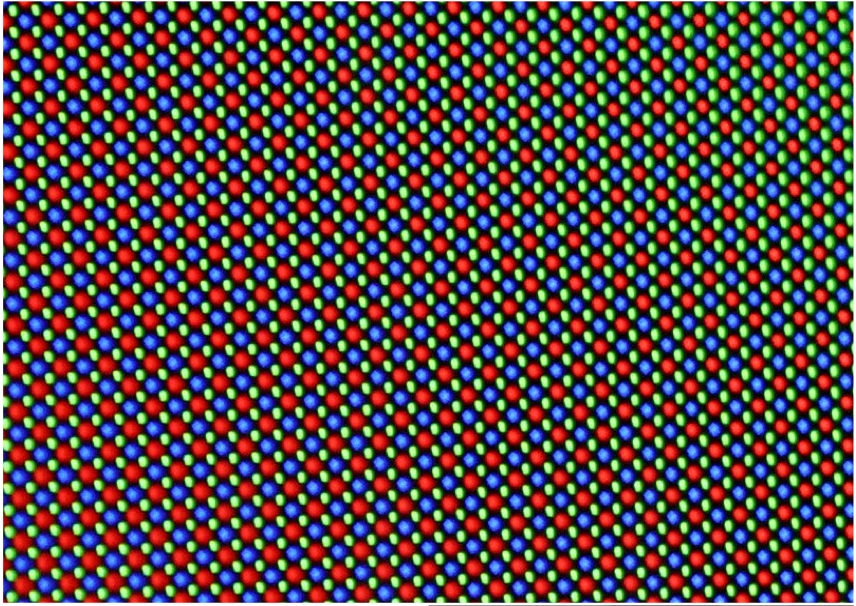Apr 13 2021
Scientists have discovered a new technique to measure the distribution of compositional changes in the indium gallium nitride (InGaN) quantum wells (QWs) at varying amounts of indium.
 An array of multi-colored LEDs periodically arranged to give off visible light; a combination of InGaN-based red, blue, and green LEDs is essential to cover lighting demands efficiently. Image Credit: Singapore-MIT Alliance for Research and Technology (SMART).
An array of multi-colored LEDs periodically arranged to give off visible light; a combination of InGaN-based red, blue, and green LEDs is essential to cover lighting demands efficiently. Image Credit: Singapore-MIT Alliance for Research and Technology (SMART).
The team included investigators from the Low Energy Electronic Systems (LEES) Interdisciplinary Research Group (IRG) at Singapore-MIT Alliance for Research and Technology (SMART), MIT’s research enterprise in Singapore, the Massachusetts Institute of Technology (MIT) and the National University of Singapore (NUS).
InGaN light-emitting diodes (LEDs) have transformed the domain of solid-state lighting because of their low cost and excellent durability and efficiency. Within the InGaN compound, the amount of indium can be changed to alter the color of the LED emission. This gives InGaN LEDs the ability to span the whole visible spectrum.
When compared to gallium—for example, the cyan, green and blue LEDs—InGaN LEDs with comparatively low amounts of indium have enjoyed considerable commercial success in automotive, communication and industrial applications.
However, LEDs containing higher amounts of indium, like the amber and red LEDs, tend to have reduced efficiency with the increasing concentration of indium.
Now, instead of InGaN, aluminum indium gallium phosphide (AlInGaP) material is used for making amber and red LEDs. This is because InGaN delivers poor performance in the amber and red spectrum because of the drop in efficiency.
Therefore, interpreting and overcoming this reduced efficiency is the initial step toward designing InGaN LEDs that cover the entire visible spectrum, and this would considerably decrease the production costs.
In an article titled “Unlocking the origin of compositional fluctuations in InGaN light-emitting diodes,” which was recently published in the leading journal Physical Review Materials, the researchers used a multifaceted approach to interpret the origin of compositional changes and their possible impact on the efficiency of InGaN LEDs.
The precise determination of compositional changes is crucial to understand their role in decreasing the efficiency in InGaN LEDs that have higher compositions of indium.
The [origin of the] efficiency drop experienced in higher indium concentration InGaN LEDs is still unknown to this date. It is important to understand this efficiency drop to create solutions that will be able to overcome it. In order to do so, we have designed a method that is able to detect and study the compositional fluctuations in the InGaN QWs to determine its role in the efficiency drop.
Silvija Gradecak, Study Co-Author and Professor, Department of Materials Science and Engineering, National University of Singapore
Gradecak is also the Principal Investigator at SMART LEES.
The investigators designed a multifaceted technique to identify indium compositional changes in the InGaN QWs through synergistic analysis. This analysis involves sophisticated atomic-scale characterization, complementary computational techniques, and independent algorithms for image processing.
This method developed and used in our research is of general applicability and can be adapted to other materials science investigations where compositional fluctuations need to be investigated.
Tara Mishra, Study Lead Author and PhD Fellow, Singapore-MIT Alliance for Research and Technology
“The method that we developed can be widely applied and provide significant value and impact on other materials science studies, where atomistic compositional fluctuations play an important role in material performance,” stated Dr Pieremanuele Canepa, the study co-author and Principal Investigator from SMART LEES.
Dr Canepa is also an Assistant Professor from the Department of Materials Science and Engineering and the Department of Chemical and Biomolecular Engineering at NUS.
The understanding of the atomic distribution of InGaN at varying indium concentrations is key to developing next-generation full-colour displays using the InGaN LED platform.
Dr Pieremanuele Canepa, Study Co-Author and Principal Investigator, SMART LEES
The researchers discovered that the indium atoms are arbitrarily distributed in InGaN with comparatively low amounts of indium. By contrast, partial phase separation was seen in InGaN with higher amounts of indium. Random compositional changes in this specific InGaN coincide with pockets of indium-rich areas.
These results provide a better understanding of the atomic microstructure of the InGaN and its possible impact on LED performance. This would pave the way for upcoming studies to find out the role of compositional changes in advanced InGaN LEDs and develop new methods to avoid the degradation of such devices.
The study was performed by SMART and funded by the National Research Foundation (NRF) Singapore under its Campus for Research Excellence and Technological Enterprise (CREATE) programme.
Journal Reference:
Mishra, T. P., et al. (2021) Unlocking the origin of compositional fluctuations in InGaN light emitting diodes. Physical Review Materials. doi.org/10.1103/PhysRevMaterials.5.024605.